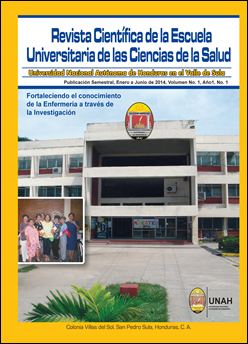Brachial Plexus and Axillary Sheath: Anatomical variants and their clinical importance
DOI:
https://doi.org/10.5377/rceucs.v1i1.2889Keywords:
Anesthesia Local Axilla, Anatomic Variation, Brachial Plexus, Bundle Branch BlockAbstract
The success of the anesthetic technique of brachial plexus block at the axillary level lies in the knowledge of the location of each of its terminals or peripheral nerves, but above all, their relationship to the lateral, medial and posterior cords with the axillary artery and vein within the axillary sheath. In the human macroscopic anatomy lab at UNAH-VS we found two anatomic variants of the components of the brachial plexus in relation surrounding the axillary artery. The first variant was found while dissecting the superior right limb, in which the axillary artery is located anterior to the median nerve emerging between the lateral and medial cords constitutive of median nerve and the second variant was found while dissect the superior left limb of the same body in which the axillary artery is located completely above. For this case we recommend the knowledge of these anatomic variants to the success of brachial plexus block at the axillary level.
Rev. Cient. Esc. Univ. Cienc. Salud, Vol.1(1) 2014: 29-32
Downloads
3795




